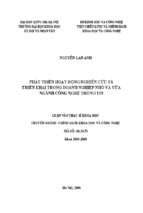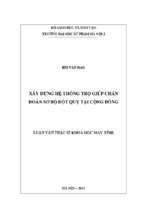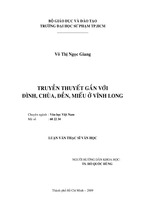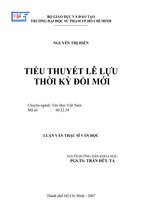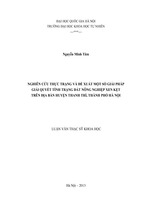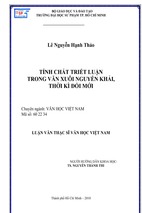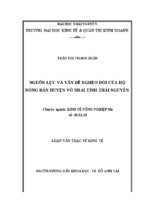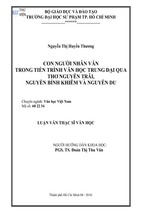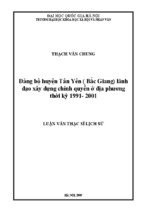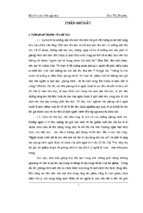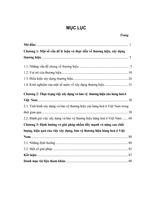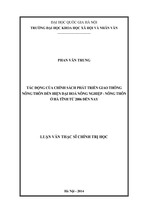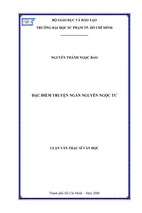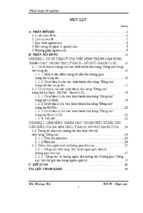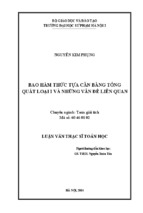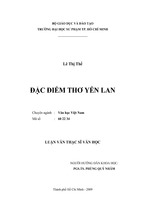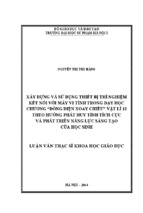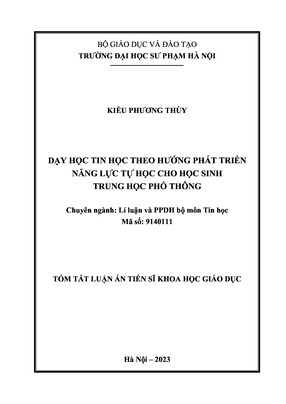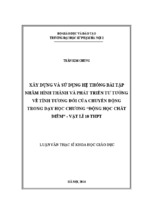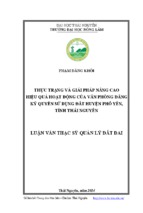EFL learners' use of print and online dictionaries
EFL Learners' Use of Print and Online
Dictionaries in L1 and L2 Writing Processes
Yuah Vicky Chun
(University of Essex)
Chun, Yuah Vicky. (2004). EFL Learners' Use of Print and Online
Dictionaries in L1 and L2 Writing Processes. Multimedia-Assisted Language
Learning, 7(1), 9-35.
The study aims to obtain a profile of users in previous instruction learners
have received with regard to solving vocabulary gap problems in Korean
(L1) and English (L2) writing, to gain knowledge on the type and form of
dictionaries, and the dictionary use strategies that are being used in writing
Korean (L1) and English (L2) compositions. Data was collected through
questionnaires and semi-structured interviews from 54 students in three
English composition classes at a university. The analysis of the data
revealed that the students have hardly received instruction for solving lexical
gap problems and dictionary use in writing of L1 and L2. With regard to
the type and form of dictionaries used in writing L1 and L2, the print
monolingual dictionary and the Internet (online) bilingual dictionary was most
popularly used where Korean-English bilingual dictionary is most frequently
utilized in L2 writing. The results imply that easy access of the Internet
(online) bilingual dictionaries contributes to its popular use in L2 writing.
The dictionary use strategies that students employed to reduce their
vocabulary gap knowledge differed significantly between L1 and L2, favoring
L2. The results suggest that writing tasks in L2 entail learners to solve
lexical gap problems and that there is need to devise classroom tasks for
productive use of dictionaries.
10
EFL
Learners'
Use
of
Print
and
Online
Dictionaries
in
L1
and
L2
Writing
Processes
I. INTRODUCTION
The current study opens at a propitious time when use of modern dictionaries, such
as CD, handheld, and Internet (online) dictionaries are gaining popularity among EFL
(English as a Foreign Language) learners within contexts where computers and
connection to the Internet are easily accessible. While dictionaries are already one of the
most readily available learning resources (Wright, 1998), online and CD dictionaries
provide user-friendly functions in searching and provide quick access to entry
information when a student-learner is at a computer to word process in a foreign
language. In the process of writing, a student may need to make a choice between two
words or retrieve a phrasal verb only partially known, and at these instances self-access
resources such as CD and online dictionaries will enable students to solve their own
language problems. In connection, the purpose of the study is to investigate EFL
students' use of print and modern dictionaries and the strategies to use them when
vocabulary gap problems or dictionary use problems are realized in writing. The study
provides pedagogical implications for teachers and students in the training of dictionary
use skills and strategies with reference to modern dictionaries where dictionary use in
writing may also lead to learning. Moreover, to the researchers' knowledge, there have
been lack of within-subject studies in the field of dictionary research that report on
comparing L1 and L2 writing processes with regard to different type and form of
dictionaries, and dictionary use strategies.
II. LITERATURE REVIEW
1. Dictionary Use and Research in Writing
Dictionary use has only recently become a topic of research interest (Hartmann, 2001;
Scholfield, 1998). Studies divide into (a) questionnaire surveys concerning what
dictionaries people say they use, how often, what they look up in them, and (b) research
on the detailed skills or strategies that users possess, or need to posses, when actually
consulting dictionaries for various specific purposes. Current research (Rundell, 1999;
Scholfield, 1999) suggests that dictionaries are used about equally in the process of
reading or writing, and sometimes when just studying or learning. In writing, the
dictionary may be called upon for a wide range of types of information besides word
meaning. A writer may retrieve a word for what they want to express, but may need to
check some aspect other than its meaning. For instance, a student writer may want to
Yuah
Vicky
Chun
11
check for irregular verb tense form, or what a typical object might be, or choose
between two words they have retrieved. Futhermore, since productive skills such as
writing require information about collocations, synonyms, idioms, syntactic behavior and
lexical phrases, they are likely to be needed very often when the EFL student is not
always aware of the proper use (Myers, 1994; Nattinger & Decarrico, 1992). As such,
dictionary use in writing may lead on to helping learners solve these problems while
writing, and support proponents of the 'output hypothesis' (Swain, 1995) that there is
potential for learning through writing.
In a study related to the use of dictionaries in writing, Harvey and Yuill (1997)
examined how ESL students made use of the dictionary entry information when they
were writing essays. They found that most students looked up words to check spelling
and meaning; however, they also found that examples illustrating syntax, collocation,
usage and context were more helpful in clarifying meaning than straight definitions. In a
study about misinterpretation and errors produced by adult language learners using EFL
dictionary definitions, Nesi and Meara (1994) found that their subjects did not use
grammatical information in the dictionary entry, or information that did not match their
preconceived ideas of what words meant. Not only did they fail to choose appropriate
lexical collocations, but they were also confused about words that looked similar to one
another. McAlpine and Myles (2003) also point out that students may use the dictionary
when uncertain about a choice of a word or when they may want to know why a
choice has been marked wrong in their written assignments. They quote Tang (1997) to
infer that these kind of errors may result from: a slightly different frame of reference
between English and the native language, multiple meaning of a word, partial overlap in
meaning, and metaphors or idioms, or cultural expressions which are non-existent in the
target or native language.
2. Bilingual and Monolingual Dictionaries in Writing
While it has been noticed that dictionary consultation is an inevitable part of the
writing process for EFL students, many studies document that there is a tendency for
student writers to use more bilingual than monolingual dictionaries (Ard, 1982; Kent,
2001; Koren, 1997; McAlpine & Myles, 2003). The use of bilingual dictionaries has been
favored among students for reflecting the general meaning of the target word (L2) in the
native language (L1), whereas the monolingual dictionaries may give more examples and
better information on grammar, collocations, and register of a word. Students may feel
comfortable with using bilingual dictionaries with having a concrete concept of the word,
12
EFL
Learners'
Use
of
Print
and
Online
Dictionaries
in
L1
and
L2
Writing
Processes
or they may feel that their vocabulary in English is too limited to deal with a dictionary
entry. However, the use of the bilingual dictionary has often been criticized for
reinforcing a naive view of the language itself because students can begin to expect a
one-to-one correlation between words of their own language and the English translation
(Hunt, 1997; Tang, 1997). On the other hand, using the monolingual learner's dictionary
can also be problematic when the monolingual dictionaries provide circular definitions
(Thompson, 1987) which will require learners of low language proficiency to keep looking
up words found in the dictionary entry. Confusion can also arise when the students may
not be able to easily distinguish among types of information within an entry, or when
definitions include inappropriate explanations and examples involving syntactic complexity,
idiomaticity and cultural specificity (Amritavalli, 1999). Another problem of monolingual
dictionaries is raised by Nesi and Meara (1994), who show that while using the learners'
monolingual dictionaries, many adult learners systematically misinterpret dictionary
entries. They infer that it arises when "dictionary users latch onto a part of the
dictionary definition, without really understanding how it relates to the word they are
looking up" (p.14). As such, there is no single dictionary that can compensate for
vocabulary gap knowledge or satisfy the dictionary needs of a student writer. Moreover,
when it is becoming the norm for students to compose at computers, often on a word
processor with connections to the Internet, the access to various kinds of dictionaries
cannot be ignored for solving lexical gap problems.
3. Use of Dictionaries in the Electronic Age
The advent of computers and the Internet has brought along new possibilities for
electronic storage and retrieval of massive amounts of information. Language learners
have been able to excel their language learning processes by gaining swift access to
reference resources, such as, online databases, and CDs. Moreover, with the increasing
use of word processors in writing tasks (at least within contexts where computers are
easily accessible), use of the Internet, CD, and handheld dictionaries serve to provide
reference information for immediate use. While research on these types of modern
dictionaries do not seem to be extensive, there have been studies, for instance, in the
use of handheld calculator type dictionaries (Taylor & Chan, 1994) and comparative
studies on print dictionaries vs. computer dictionaries in reading comprehension (Aust,
Kelly, & Roby, 1993). Nesi (1999) reviews the various use of handheld and desktop
computer dictionaries, however, taking on a skeptical view that the speed and ease of
electronic lookup does not necessarily benefit the language learning process. Nevertheless,
Yuah
Vicky
Chun
13
current literature contributes to widening understanding on what users do, what
constitutes the dictionary consultation process, and how dictionary training can be
implemented in the classroom.
Koren (1997) compares the advantages and disadvantages of most types of modern
dictionaries both from the teachers and researchers' as well as from the students' points
of view, and shows that clear distinctions need to be made between tasks (e.g., learning,
and reading for pleasure) in order to optimize dictionary use patterns in whether to use
a single dictionary or to use it in combination with another dictionary. One of the views
that she discusses is the problem of quality versus convenience between the print and
electronic (handheld) dictionaries among EFL students in reading comprehension tasks.
The researcher recognizes that the printed dictionaries help to learn words, whereas most
electronic dictionaries help to find words, and the fact that retention of words is likely to
be better with a printed dictionary. Another benefit of the printed bilingual dictionary, as
Koren points out, is that it enables the reader to see a whole page with other words
from the same family, plus idioms, common phrases and phrasal verbs related to the
same entry. On the other hand, she mentions in her discussion that what may be
preferred among students is the electronic dictionary for their speed. As a final point,
Koren explains that the suitability in the types of dictionaries to be used depend on the
type of task (e.g., learning, reading for pleasure, or writing essays) to be completed at
hand rather than on reliance of what may be preferred among teachers and learners.
Koren presents some solutions to helping EFL teachers in knowing which dictionary to
recommend to their students. They are to (a) use several types of dictionaries together,
for instance, bilingual and monolingual dictionaries. However, the disadvantage of this
suggestion is that the look-up tasks may become tiresome and time-consuming. The
second suggestion is to (b) use primarily a monolingual learner's dictionary since
language learners will have fewer problems with the vocabulary of the definitions, and to
(c) use a two-path bilingual dictionary, which is from Walz's (1990) suggestion to use
both forms of the bilingual dictionaries (e.g., English-Korean and Korean-English) which
would seem more suitable for students who need to know new words for production.
Lee Chongmin (2002) as a part of her study surveyed Korean university student
subjects in their use of dictionaries in specific tasks with focus on English-Korean
bilingual and English monolingual dictionaries. She found her subjects to use paper
dictionaries significantly more than electronic handheld ones both in English-Korean and
English monolingual dictionaries where the difference was bigger in English monolingual
dictionaries. This reflected that the subjects used paper dictionaries more often than
14
EFL
Learners'
Use
of
Print
and
Online
Dictionaries
in
L1
and
L2
Writing
Processes
electronic ones especially when they used a monolingual dictionary. Moreover, when the
subjects were investigated in what kind of dictionary they used in English writing tasks,
they reported to use English-Korean dictionary more than the English monolingual
dictionaries, and paper dictionaries more than electronic ones. The researcher finds that
subjects use more monolingual dictionaries for productive tasks such as writing than
receptive tasks in reading.
In spite of efforts of researchers to investigate language learners' use of dictionaries,
the scope of the dictionary research remains quite limited in what learners do while
writing. There have been few studies on the research of lexical behavior of learners in
the way they handle vocabulary gap problems while writing, however, only alongside
speaking in the literature on communication strategies (Chimpaganda, 2000; Scholfield &
Katamine, 1999; Swain & Lapkin, 1995; Varadi, 1980; Yarmohammadi & Saif, 1992). In
dictionary research, there have been some research on the productive use of dictionaries
for monolingual (Nesi, 1987; Nesi & Meara, 1994) and bilingual dictionaries (Ard, 1982;
Christianson, 1997), but in general there have been lack of research on what Hartmann
(2001) labels the 'user perspective'. Hartmann points out that there is very little known
about the dictionary user in what kinds of dictionaries (e.g., general or specific) are used
by which kinds of users (e.g., lay or expert) for which kind of tasks (e.g., home or
work) and by what kinds of look-up strategies (e.g., simple or composite). He also
recognizes that the dictionary users of electronic products have not yet stood the test of
time. As such, the present study aims to add findings in the use of dictionaries while
writing at a computer with access to modern dictionaries by investigating the following
research questions.
The research questions of the current study are:
1) With regard to Korean (L1) and English (L2), have students received instruction
for vocabulary gap problems and dictionary use in writing?
2) With regard to Korean (L1) and English (L2), what are the most commonly used
type and form of dictionaries while writing?
3) With regard to Korean (L1) and English (L2), what dictionary use strategies do
students employ to solve vocabulary problems when writing?
The term 'type' specifically refers to the distinction by languages, that is the
monolingual dictionaries and the bilingual dictionaries. 'Form' refers to the researcher's
intention in asking the 'presentation mode' of the dictionaries of print, CD, electronic
Yuah
Vicky
Chun
15
handheld, and online Internet dictionaries.
III. RESEARCH DESIGN
1. Subjects and Setting
1) Learners-Subjects
There were 54 students who took part in the present study. They were from three
sections of a writing course, Intermediate English Composition, an elective course open
to all students in a university in Seoul, Korea. The course offers instruction in academic
writing from paragraphs to essays following the process approach. The teachers were
native English and the medium of classroom language was English only. The specific
English writing course was chosen for data collection since it provided the ideal context
where students would have the optimum possibility of relating to and answering
questions about writing procedures and use of dictionaries in the process. The students
were from three groups of majors in liberal arts (n = 18 students, 33%), business (n =
16, 30%), and science (n= 20, 37%). There were equal numbers of 27 males and 27
females by chance. The mean age of the subjects was about 24. The students ranged
from ages 20-21 (n = 10, 28%), 22-23 (n = 14, 26%), 24-25 (n= 14, 26%), to over 26 (n
= 16, 30%). The mean age for the males was approximately 25 and 22.67 years for
females. All students ranged from sophomores to juniors (no freshmen) who had all
taken two semesters of general English courses required for all the students, and most
of them had taken a few more elective English courses within the university other than
the writing course. With the range of years in learning English, students had learnt it
for less than 7 years (n = 11, 20%), 8-9 years (n = 13, 24%), 10-11 years (n = 14,
36%), and over 12 years (n= 13, 24%). In sum, the students were members of a
homogeneous group all sharing similar educational contexts with having learnt English
for a mean of ten years. It needs to be noted furthermore that with the influence of
overseas education, there were 12 students (20%) who had received some of their
education in English-speaking countries ranging from a few months to nine years before
coming to the university.
2. Data Collection Instruments
The instruments used for the collection of data on students' experience with regard
16
EFL
Learners'
Use
of
Print
and
Online
Dictionaries
in
L1
and
L2
Writing
Processes
to dictionary use in writing L1 and L2 were a questionnaire and semi-structured
interviews.
1) Learner Questionnaire
The questionnaire was constructed based on the research questions. It aimed to
gather information about dictionary use in L1 and L2 writing. The format of the
questions were dominantly multiple-choice where students could choose as many as
relevant to their experience. There were also open-ended (descriptive) questions asked to
complement answers from the multiple choice questions to encourage liberty and depth
over what the students could remember about their dictionary use patterns in writing
experience of L1 and L2, and not to impose researcher's bias.
All questions were delivered in Korean (L1) so as to make it easily comprehensible
for the students, and any field specific terminology was avoided and explained in the
most easiest phrases. The questionnaire was 5 pages long and was administered by the
classroom teachers at the beginning of the semester during one of their regular
classroom sessions. It took the students 15-20 minutes to complete, and the response
rate was 100%. It was reminded that the learners should answer the questions related to
their past dictionary use experience by excluding the experience from the current writing
course.
2) Learner Interview
Semi-structured interviews were conducted with eighteen students from "Intermediate
English Composition" to triangulate responses from the questionnaires. The interview
sessions were held at the beginning of the semester. The students were volunteers and
were contacted by the researcher for arrangement of dates and times to meet by email
for reasons of clarity and students' preferred means of communication The interviews
were held in the teacher's office and it took 20 minutes for a single interview. The
interviews were held in Korean and recorded on digital voice recorders and the
researcher simultaneously took notes. The semi-structured interviews, in parallel with the
questionnaire questions, asked about prior dictionary use experience in writing Korean
and English compositions. Questions asked were related to the research questions on:
1)What the students did when they realized a vocabulary problem while writing, 2)What
dictionaries they most commonly used and 3) Which part of the dictionary entry
information they found most useful when writing.
Yuah
Vicky
Chun
17
3) Data Analysis
All responses that could be quantified were analyzed using SPSS for Windows 10.
Qualitative responses elicited by the questionnaire were tallied according to the keywords
or phrases of the short answers that students wrote. Although the students' descriptive
answers have the limit of reporting what they wish to report and perhaps leave out on
any significant information that needs to be known about previous dictionary use
experience in writing, it was believed that what the students reported was what they
most easily remembered as being the most important or influential part of their
experience with dictionaries.
IV. RESULTS AND DISCUSSION
1. Instruction of Strategies on Vocabulary Problems and Dictionary Use
The research question one was: With regard to Korean (L1) and English (L2), have
students received instruction for vocabulary gap problems and dictionary use in writing?
1) Students' Previous Experience with Instruction in Solving Vocabulary Problems
The following Table 1 shows the learners' responses in the questionnaire as to what
extent they have received formal instruction to help them solve vocabulary gap problems
while writing L2 (English) and L1 (Korean) writing. The students were specifically
asked if they had received any formal instruction for what to do when stuck for a word
or expression in both languages, in other words, strategies to solve vocabulary gap
problems.
[Table 1] Experience of Instruction for Vocabulary Problems
sometimes rarely never Chi-squared
p
x²
6
11
33
English (L2) writing
39.5
.00*
(11%) (21%) (61%)
Korean (L1) writing
3
16
35
28.8
.00*
(5%) (30%) (65%)
Note: *= statistically significant (p<.05)
often
4
(7%)
0
(0%)
18
EFL
Learners'
Use
of
Print
and
Online
Dictionaries
in
L1
and
L2
Writing
Processes
The results from the questionnaire suggest that not many students have received
instruction for what to do when they realize a gap in their vocabulary knowledge in L2
and L1. In the case of English writing, 10 subjects (18%) responded to a positive
experience of having instruction for what to do when they had a gap in their vocabulary
knowledge while writing. In the case of Korean writing, 3 subjects (5%) responded
positively. There were statistically significant differences in the responses of experience
between instruction of strategies for solving vocabulary gap problems in L1 and L2
writing, and the results show that the learners had slightly more frequent experience of
strategy instruction for vocabulary gap problems in English than in Korean. Nevertheless,
the relatively high number of responses for 'never' having received instruction for
vocabulary problems revealed that the students had been left alone to solve vocabulary
problems while writing in L1 and L2. The differences here after all may not be as
important as noticing the lack of any teaching of strategies to solve vocabulary gap
problems of writing in both languages. Students may often be placed in the situation to
write as best as they can with access to only dictionaries. Students may select the one
most easily accessible rather than the one that seems best for the task (e.g., pleasure
reading or exam studying) to be completed.
The student interviews also underline that there was hardly any reference to teaching
of strategies when they were stuck for a word or phrase in both languages. It seems
that most of the problems had been left to students to solve during their independent
writing processes. In connection, the students had been asked in the questionnaire to
describe their knowledge of strategies for vocabulary problems (e.g., what to do when
stuck for a word) in Korean and English writing. In the case of English writing, eight
subjects gave a response which was mostly about using dictionaries and asking a
teacher or a friend to fill in for the knowledge gap. In other words, the strategies
students knew about solving vocabulary problems while writing fell in the category of
appealing for assistance (Bialystok, 1990; Faerch & Kasper, 1983). One student reported
in detail that when he was stuck for a word, he had been told to find a synonym in a
thesaurus closest in meaning, select a word and to use a monolingual dictionary to
double check on the information of the word. As such, cross-referencing has been
known to be one of the ideal ways of looking up words in dictionaries (Scholfield, 2002,
personal communication). Another student had been told to use the dictionary like her
'other self' and try to become familiar with the words or phrases she had looked up.
Two other students displayed a passive attitude toward accessing the words needed to
be used by relying on the correction of vocabulary errors by a teacher, or to rely on
Yuah
Vicky
Chun
19
input from the teacher/instructor during the planning stage of writing in giving them the
content words and expressions needed to write essays on a specific topic. In another
response, one student reported that she had been instructed to use a known word closest
in meaning 'without hesitation'. This is an approach that was taken in favor of fluency
in communication (e.g., frequent use of avoidance in what to say) rather than accuracy
(e.g., by frequent use of dictionaries).
In the case of Korean writing, two students gave descriptions as to what they had
been instructed to do when meeting vocabulary problems while writing. They both
explained that they would ask the teacher for the appropriate vocabulary to be used.
Another student referred to a long term plan, one that falls in "meta-cognitive strategy"
(O'Malley & Chamot, 1990) mentioning that he would read up a lot of books to learn
vocabulary that might be needed while writing. As a whole, the low response rate from
the quantitative and qualitative data both support that there is lack of recognition on
vocabulary problems while writing. The issue is connected to the examination of
dictionary use strategies while writing in trying to fill a learner's knowledge gap in
vocabulary.
2) Students' Previous Experience with Instruction on Dictionary Use
In connection to the examination of students' ability and knowledge in solving
vocabulary problems while writing, there was also an investigation on the use of
dictionaries. The following Table 2 shows the learners' responses in the questionnaire as
to what extent they have received formal instruction for effective dictionary use in L2
(English) and L1 (Korean) writing. The students were specifically asked for both
languages: "In your writing class, how often were you taught to effectively make use of
a dictionary in writing a composition?"
[Table 2] Experience of Instruction for Dictionary Use
often sometimes rarely never Chi-squared
x²
1
17
34
English (L2) writing 2
53.4
(4%) (2%) (31%) (63%)
Korean (L1) writing 0
2
15
37
34.8
(0%) (4%) (28%) (68%)
Note: *= statistically significant (p<.05)
p
.00*
.00*
20
EFL
Learners'
Use
of
Print
and
Online
Dictionaries
in
L1
and
L2
Writing
Processes
The results from the questionnaire suggest that not many students have been
instructed to make effective use of dictionaries while writing. In the case of English
writing, 3 subjects (6%) responded to a positive experience of having received any
instruction on dictionary use while writing. In the case of Korean writing, 2 subjects
(4%) responded positively. There were statistically significant differences in the
responses of experience between instruction on dictionary use strategies in L1 and L2
writing, and the results show that the learners had slightly more frequent experience of
strategy instruction on dictionary use in English than in Korean. What is more
noticeable is that any instruction on dictionary use has been infrequent for both
languages. This finding has also been validated in a project coordinated by Atkins &
Varantola (1998). The study confirmed a number of findings of other studies that the
majority of students had received no (or very little) instruction in the use of dictionaries,
for instance, that regardless of training most do not know under which of their
constituent parts idioms should be looked up.
When the students were asked in the questionnaire to describe their knowledge of
how they had been using the dictionary while writing, only one out of the 54 students
reported for Korean writing. She had been instructed to find the meaning of a word in a
dictionary by finding the word through the Hangul (Korean writing system) consonant
and vowel order. This is, however, a basic dictionary use method rather than a strategy
that most students, who have used a Korean monolingual dictionary, would know about.
In the case of English writing, the description about dictionary use strategies in
English was also limited. Two subjects explained that they had been told to make use
of example sentences in monolingual dictionaries. This approach, however, carries some
restrictions when the dictionary entry does not carry the needed example sentence. One
other student who had been at a summer language program abroad reported that he had
been instructed to map out words or expressions related to the theme or topic of writing
in a tree diagram (i.e. semantic mapping) and to learn the words or expressions in
relation to one another after looking up the words in an English monolingual dictionary.
However, for these kinds of strategies to be successful, the role of the information-giver
or the teacher is important. The teacher may need to conduct informative brainstorming
sessions before the writing task, introduce dictionaries for productive use, such as the
thesaurus, or provide self-access links to the Internet, such as at Visual Thesaurus 1)
where definitions are presented with information on synonyms and collocations in
semantic map diagrams.
1) http://www.visualthesaurus.com/online/index.html
Yuah
Vicky
Chun
21
2. The Types and Forms of Dictionaries
The research question was: With regard to Korean (L1) and English (L2), what are
the most commonly used type and form of dictionaries while writing?
In the questionnaire, the subject-learners were asked about the Korean and English
monolingual dictionaries, and the Korean-English and English-Korean bilingual
dictionaries. On the whole, for all 'types' of dictionaries, the subjects were asked to
choose dictionary 'forms' that they found useful for writing in L1 and L2.
1) Use of Dictionaries in English Compositions
The students were asked what type of dictionary they mostly used while writing
compositions in English. Subjects were asked to mark the relative frequency of using a
certain type of dictionary when writing compositions in English; they were asked to
mark the order from the least frequently used to the most frequently used among the
three types of dictionaries from Korean-English, English-Korean bilingual dictionaries,
and the English monolingual dictionary. The results showed that students in their
writing process use the Korean-English bilingual dictionary most frequently (63%), the
English-Korean bilingual dictionary next frequently (24%), and the English monolingual
dictionary least frequently (13%). In the same line, Stein (1990) suggests that the most
natural progression seems to be from the bilingual to the monolingual general-purpose
dictionary, and recommends learner's monolingual dictionary to be more suited for
intermediate and advanced learners.
2) Korean and English Monolingual Dictionaries
Learner-subjects were asked for both English and Korean monolingual dictionaries as
to the 'form' of dictionaries that was most useful to them for writing. The learners
were asked to choose as many items that were relevant to their writing process.
Item: Forms of
Dictionaries
Print
Online
Handheld
Hardly used
CD
[Table 3] Use of Monolingual Dictionaries
English Monolingual
Dictionary
Frequency
rank
31(57%)
1
16(30%)
2
7(13%)
3
8(15%)
4
4(7%)
5
Korean Monolingual
Dictionary
Frequency
rank
23(43%)
1
18(33%)
3
2(4%)
4
20(37%)
2
1(2%)
5
22
EFL
Learners'
Use
of
Print
and
Online
Dictionaries
in
L1
and
L2
Writing
Processes
As the results indicate, students most favored using the print dictionary for both
Korean and English bilingual dictionaries. The online dictionary ranked 2nd for the
English monolingual dictionary and 'hardly used' was ranked as 2nd for the Korean
monolingual dictionary. It reflects overall that student writers need the Korean
monolingual dictionary much less frequently than when writing in English or a foreign
language. All in all, dictionaries in 'print' form seemed to be the most popular while the
online dictionary was the next commonly used in the English and Korean writing
processes.
[Table 4] Use of Monolingual Dictionaries in L1 and L2 Writing
Items: Forms English Korean English and Neither Used Chi-squared
of
(Including
x²
Dictionaries Mono Mono Korean Mono no response)
30
20
17
15
Print
7.41
(62%) (42%)
(35%)
(31%)
15
17
9
25
Online
5.77
(31%) (35%)
(19%)
(52%)
6
2
2
42
Handheld (12%)
14.61
(4%)
(4%)
(88%)
4
1
1
44
CD
11.23
(8%) (2%)
(2%)
(91%)
Note: *= statistically significant (p<.05)
p
.01*
.02*
.00*
.00*
With regard to the use of 'type' of monolingual dictionaries, the results for each
were statistically significant. There were 30 subjects (62%) and 20 subjects (42%) that
showed positive responses for using the 'print' English and Korean monolingual
dictionaries respectively. 15 subjects (31%) and 17 subjects (35%) showed positive
responses for using 'online' English and Korean dictionaries respectively. On the other
hand, 44 subjects (91%) and 42 subjects (88%) showed negative responses for using CD
and handheld dictionaries respectively in their writing processes. As a whole, the pattern
of results reflect that 'print' and 'online' monolingual dictionaries are commonly used in
the students' writing processes whereas the 'handheld' and 'CD' seem unpopular for
use.
Yuah
Vicky
Chun
23
3) English-Korean and Korean-English Bilingual Dictionaries
Learner-subjects were asked for both English-Korean and Korean-English bilingual
dictionaries as to the 'form' of dictionaries that was most useful to them for writing.
The learners were asked to choose as many items that were relevant to their writing
processes.
Items: Forms of
Dictionaries
Online
Print
Handheld
Hardly used
CD
[Table 5] Use of Bilingual Dictionaries
English-Korean Bilingual
Dictionary
Frequency
rank
29(54%)
1
21(39%)
2
12(22%)
3
3(6%)
4
2(4%)
5
Korean-English Bilingual
Dictionary
Frequency
rank
31(57%)
1
22(41%)
2
14(26%)
3
2(4%)
5
3(6%)
4
The pattern of the results almost paralleled for both bilingual dictionaries only
showing slight differences in the 'hardly used' and 'CD' categories. The most favored
'form' was the 'online' followed by 'print' and 'handheld' bilingual dictionaries. The low
relative response in the rank of 'hardly used' shows overall that students writing a
composition in English as a foreign language necessitates them to write with access to
bilingual dictionaries in their writing processes. This may prove that students are writing
in a foreign language by checking information about the word they are using or making
a choice between two words or phrases they may want to use and dictionaries are
assisting them to do that.
The results of the semi-structured interviews revealed that Korean-English
dictionaries were most often used in the students' writing processes where online
bilingual dictionaries at Yahoo! Korea 2) and Naver 3) were frequently accessed. Their
reasons for the preference of the online dictionaries is in speed. They explained that
online dictionaries are fast, easy to read and easy for noticing important information
which is often in hyperlinks. The links easily extended the information about the word,
such as in finding example sentences, derivatives, synonyms, collocational expressions,
2) http://www.yahoo.co.kr
3) http://www.naver.com
24
EFL
Learners'
Use
of
Print
and
Online
Dictionaries
in
L1
and
L2
Writing
Processes
and other related words so that the students did not have to do a new search at the
site. In other words, the "parallel and multi-path (multilingual)" search functions (Koren,
1997) seem to be more important for productive tasks, such as writing.
Items: Forms
of
Dictionaries
Online
Print
Handheld
CD
[Table 6] Use of Bilingual Dictionaries in L2 Writing
Eng-Kor
Bilingual
29
(59%)
21
(43%)
12
(24%)
2
(4%)
Kor-Eng
Bilingual
30
(61%)
20
(41%)
13
(26%)
3
(6%)
Note: *= statistically significant (p<.05)
Eng-Kor
and
Kor-Eng
27
(55%)
17
(35%)
11
(22%)
2
(4%)
ChiNeither squared
Used
x²
17
(35%) 30.41
25
(51%) 24.51
35
(71%) 34.59
46
(94%) 31.97
p
.00*
.00*
.00*
.00*
With regard to the use of 'type' of bilingual dictionaries, the results for each were
statistically significant. There were 29 subjects (59%) and 30 subjects (61%) that showed
positive responses for using 'online' English-Korean and Korean-English bilingual
dictionaries respectively. What may be noticeable is that 27 (55%) students who use the
Korean-English bilingual dictionary may use the English-Korean bilingual dictionary and
vice versa. For instance, the use of the two bilingual dictionaries becomes easily
bidirectional at online dictionary sites; one may switch very easily from one type to the
other by instant mouse clicks. 21 subjects (43%) and 20 subjects (41%) showed positive
responses for using print English-Korean and Korean-English bilingual dictionaries
respectively. The CD bilingual dictionaries did not show to be popularly used as reference
material during the students' writing processes. As a whole, the students are more active
in using bilingual dictionaries than monolingual dictionaries in their writing processes. The
'print' form was the preferred form of monolingual dictionaries, and the 'online' dictionary
proved to be the preferred form of bilingual dictionaries when writing. These results are
connected to the fact that when student writers have to hand in word processed
assignments, which is becoming the norm in academic contexts, they are often composed
at a computer linked to the Internet. According to the interview, it is easy access to
information on a word or phrase in both languages of L1 (Korean) and L2 (English) at
one sitting that encourage students to use online dictionaries. Students explained in the
Yuah
Vicky
Chun
25
interviews that taking advantage of the online dictionaries becomes immediately apparent;
clicking on a related word or phrase in a list takes them to the appropriate information
category such as for the L2 equivalent word of L1, to a derivative of the word, or to
check up on synonymous L1 words to arrive at better L2 words. However, the basic
usage pattern is situational rather than general. The analysis of the data from student
interviews reveal that students tend to use more online or CD dictionaries when
composing at a computer, or print and electronic handheld dictionaries when the look-up
task needs to be brief, or when there is a problem with access to a computer.
3. Dictionary Use Strategies in Korean and English Compositions
Research question three was: With regard to Korean (L1) and English (L2), what
dictionary use strategies do students employ to solve vocabulary problems when writing?
The learners were specifically asked for both English and Korean: "Think about your
writing process when you are writing in English/Korean. As you prepare and then write
essays in English/Korean to what extent do you......?" In the questionnaire they were
asked to rate a Likert's scale from 1-5 ranging from 1 as never, 2 as rarely, 3 as
sometimes, 4 as often and 5 as always. Table 7 presents the quantitative results from
responses of 54 learners. Missing responses are excluded in the analysis.
[Table 7] Dictionary Use Strategies in Writing
English writing
Korean writing
Items
Mean SD rank Mean SD rank
Use a dictionary
when not sure about 4.46 .67
1
3.54 1.11
1
spelling
Use a dictionary
when not sure about 4.42 .61
2
3.26 .99
2
meaning of a word
Use a dictionary
when not sure about 4.12 .92
3
3.25 1.07
3
register of a word
Successfully use the
dictionary to find 3.82 .92
4
2.84 1.14
5
the wanted
information
Use a dictionary for
words that cannot 3.83 .92
5
2.98 1.19
4
be fully remembered
Note: SD= standard deviation, * = statistically significant (p<.05)
t
p
-5.04
.00*
-7.46
.00*
-4.37
.00*
-4.79
.00*
-5.16
.00*
26
EFL
Learners'
Use
of
Print
and
Online
Dictionaries
in
L1
and
L2
Writing
Processes
The results reveal that dictionary use strategy for checking spelling was ranked as
the most frequently employed of the students for L1 (Korean) and L2 (English) writing.
The data from the interview supports that students, for instance, would try to look up
the dictionary to guess at the spelling of a word that they had heard at a movie or
news broadcast. One student said that if the attempt failed in an English-Korean
dictionary, she would try to cross-reference it by attempting to find the English word in
the Korean-English dictionary. The next frequently used strategy to use dictionaries for
checking on the meaning and register in L1 and L2 writing. Moreover, the extent to
students' success in using dictionaries to find the wanted information ranked 4th in L1
writing and 5th in L2 writing. The mean difference between L2 and L1 in the successful
use of dictionaries validates that students use more dictionaries in L2 writing to be
successful in their dictionary use attempts. Similarly, the mean difference in L1 and L2
in the use of dictionaries for words that cannot be fully remembered explains that there
are more instances of lexical gap in the student writers' knowledge in L2 writing and
thus more possibility of using the dictionary.
In the semi-structured interviews, the students' evaluated their dictionary use
attempts to be successful most of the time, and the information category they mostly
referred to was for example sentences, and less frequently for other information
categories. The students' awareness about the importance of example sentences shows
that they realize contextual information to be important in writing tasks. In fact, many
students reported about having difficulties in selecting an appropriate word to fit the
context of the sentences they were writing. When the students were asked as to what
they did when their dictionary use attempts had been unsuccessful in accessing the
needed word or information category, they reported that they would change the word to
one that they were more familiar with, paraphrase, or appeal to a teacher or friends for
help, and in extreme cases abandon using the word to express the idea they had in
mind.
The results of the five-paired t-tests indicate that were significant differences in the
occurrence of dictionary use strategies between the L1 and L2, favoring L2 writing. The
results explain that the level of learners' attempts to use the dictionary was relatively
more frequent than that toward L1 writing. It affirms that learners encounter more
lexical gap problems while writing in the L2. On the whole, EFL teachers in writing
instruction may need to be concerned with the problem-oriented nature of the writing
process with regard to students' lexical gap problems and devise tasks to use
dictionaries more effectively.
Yuah
Vicky
Chun
27
V. CONCLUSION
1. Summary of Findings
As a foundation to the study in dictionary use, it was found in the questionnaire that
the students had rarely received instruction for what to do when encountered with
vocabulary gap problems, and lacked knowledge of strategies in using dictionaries
effectively for both L1 and L2 writing. In order to investigate their expectations for what
information dictionaries should carry, the students were asked what type and form of
dictionaries they were using. As to the type and form of dictionaries that were being
used during the writing processes, the print was the preferred form for both English and
Korean monolingual dictionaries. While the use of the Korean-English dictionary was
more common than the English-Korean dictionary in the L2 writing process, the online
bilingual dictionaries ranked as the most frequently used for both types. The use of the
word processor with connections to the Internet contribute to profuse and transient uses
of online dictionaries. The speed and the bidirectional nature in the access of bilingual
online dictionaries contribute to its popular use particularly in the L2 writing process.
In the students' dictionary use strategies in L1 and L2 writing, there were significant
differences, favoring L2. It implies that there are more uses of the dictionary in the L2
writing process. The quantitative results revealed that students were using the dictionary
most frequently for checking spelling, and the next frequently for meaning and register.
In comparison, the interviews further revealed that the students in many cases relied on
online dictionaries for information on example sentences, and synonyms of words
students wanted to use. Many students confessed about having difficulties in selecting
the appropriate word from the dictionary entries to use within the context of the
sentences they were writing.
2. Implications for Dictionary Use Research and Training
The research so far on EFL students' dictionary use patterns with regard to
particular type and form of dictionaries contributes to expanding our knowledge of
dictionary users in dictionary research, and also provide some views on how teachers
can help learners access accurate information from dictionaries by starting from the ones
that students like to use. For teachers and researchers, the results show how language
learners access dictionaries in need of certain information categories, and what may be
troubling the students most in the productive use of dictionaries in L1 and L2 writing.
28
EFL
Learners'
Use
of
Print
and
Online
Dictionaries
in
L1
and
L2
Writing
Processes
The results show that there need to be more classroom time spent on using the
dictionaries. Even though there were less instances of dictionary use in L1 writing, the
findings for use of dictionaries in L2 provide implications that the use of L1 monolingual
dictionaries should be encouraged in L1 writing, for instance, in refining and optimizing
the appropriate choice of words, and referencing example sentences. For L2 writing
tasks, example sentences from the learners' monolingual dictionaries can be utilized, and
students' inappropriate sentences from essays may also be brought to their attention to
point out misused words within a context of a sentence. It requires modelling by the
teacher in use of a newly learnt word, and requires the student to perform a task using
the targeted skills.
In the same vein, Cubillo (2002) states that as with many other aspects of language
learning, exposure to input, such as repeated reminders that there are dictionaries to help
the students' language learning process and the discussion of the kind of information
that may contain is not enough for the concept to be acquired (Swain, 1995); learners
need to find themselves in a situation where this type of dictionary is needed and then
the teacher should remind learners of its characteristics, provide significant activity, and
create an appropriate environment in which to use it. It is not an issue of what users
use most or what they find most interesting. For instance, in order to utilize online and
CD dictionaries, classroom reading tasks may be devised for students to read passages
on the Internet (e.g., Short Stories at East of the Web)4), so that the look-up procedures
may be swift and accurate. Writing tasks may be completed at message boards(e.g.,
Yahoo! Groups)5), with email or word processors to allow look-up procedures to be less
troublesome for students to achieve expressing what they have in mind.
For students, the present kind of study may sensitize them to become aware that
there are various type and form of dictionaries other than the ones they commonly like
to use. If it is the case that bilingual online dictionaries are most popularly used among
students, they need to become aware about access to other type and form of dictionaries.
As for the monolingual dictionaries whether in print or CD, it needs to be pointed out
that they carry wealth of information on words and exercises to go along with them
(Tribble, 2003). There is also need to devote classes to introduce learners to using
monolingual learners' dictionaries in the classroom, and to introduce that workbooks
exist with many dictionaries (Stark, 1990). Although the CD dictionaries did not show to
be popularly used in the current study, access to CD form dictionaries are easily
4) http://www.eastoftheweb.com/short-stories/indexframe.html
5) http://groups.yahoo.com
- Xem thêm -

